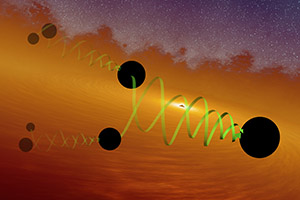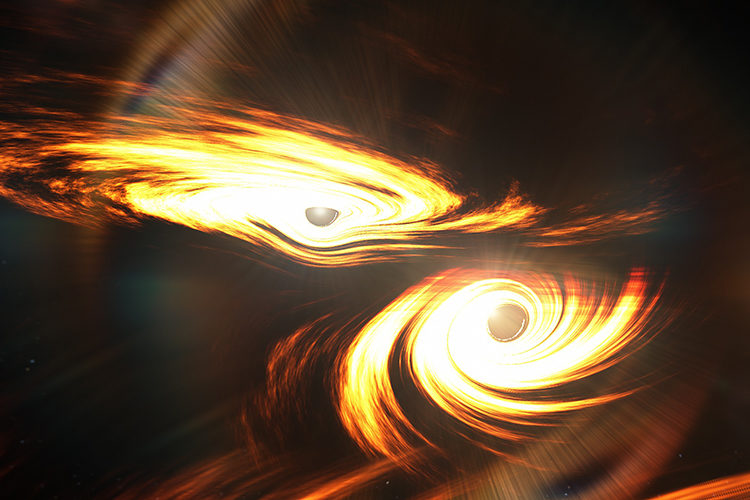Researchers have detected a signal from what may be the most massive black hole merger yet observed in gravitational waves, an event that created a behemoth 142 times that of the sun.
Produced by extreme events in the universe and first detected by the National Science Foundation’s Laser Interferometer Gravitational-wave Observatory (LIGO) in 2015, gravitational waves reverberate through the fabric of space-time, like the clang of a cosmic bell.
This signal, which scientists have labeled GW190521, was detected on May 21, 2019, by LIGO and Virgo, a 3-kilometer-long detector in Italy.
Using a suite of state-of-the-art computational and modeling tools, scientists think that GW190521 was most likely generated by a binary black hole merger with unusual properties, said Patrick Brady, UWM professor of physics and spokesperson of the LIGO Scientific Collaboration (LSC), the international group representing 1,300 scientists – including those at UWM – that is engaged in gravitational wave research with data from the LIGO observatories.

Almost every confirmed gravitational-wave signal to date has been from a binary merger, either between two black holes or two neutron stars. This newest merger appears to be the most massive yet, involving two black holes with masses about 85 and 65 times the mass of the sun.
Their collision released an enormous amount of energy, equivalent to around eight solar masses – or eight times the mass of our sun – that spread across the universe in the form of gravitational waves.
“This [signal] doesn’t look much like a chirp, which is what we typically detect,” said Virgo member Nelson Christensen, a researcher at the French National Centre for Scientific Research. “This is more like something that goes ‘bang,’ and it’s the most massive signal LIGO and Virgo have seen.”
Half a universe away
From what the researchers can tell, GW190521 was generated by a source that is roughly 5 gigaparsecs away, when the universe was about half its age, making it one of the most distant gravitational-wave sources detected so far.
The LSC and the Virgo Collaboration have reported their findings in two papers published today. One, appearing in Physical Review Letters, details the discovery, and the other, in The Astrophysical Journal Letters, discusses the signal’s physical properties and astrophysical implications.
“It’s a really exciting discovery that also brings new questions about how stars live and die and how these binaries form,” Brady said.
First of its kind
All of the black holes observed to date fit within one of two categories. They are either stellar-mass black holes, which measure from a few solar masses up to tens of solar masses and are thought to form when massive stars die; or supermassive black holes, such as the one at the center of the Milky Way galaxy, that are from hundreds of thousands to billions of times that of our sun.
However, the final 142-solar-mass black hole produced by the GW190521 merger lies within an intermediate mass range between the two categories — the first of its kind ever detected.
The two progenitor black holes that produced the final black hole also seem to be unique in their size. They’re so massive that scientists suspect one or both of them may not have formed from a collapsing star, as most stellar-mass black holes do.
Where did they come from?
So how did the two merging black holes observed by LIGO and Virgo originate?
One possibility, which the researchers consider in their second paper, is of a hierarchical merger, in which the two progenitor black holes themselves may have formed from the merging of two smaller black holes.
The GW190521 merger raises more questions than it answers, said LIGO member Alan Weinstein, professor of physics at Caltech.
“Although this event is consistent with being from an exceptionally massive binary black hole merger, and alternative explanations are disfavored, it is pushing the boundaries of our confidence,” said Weinstein.
This research was funded by the U.S. National Science Foundation.








